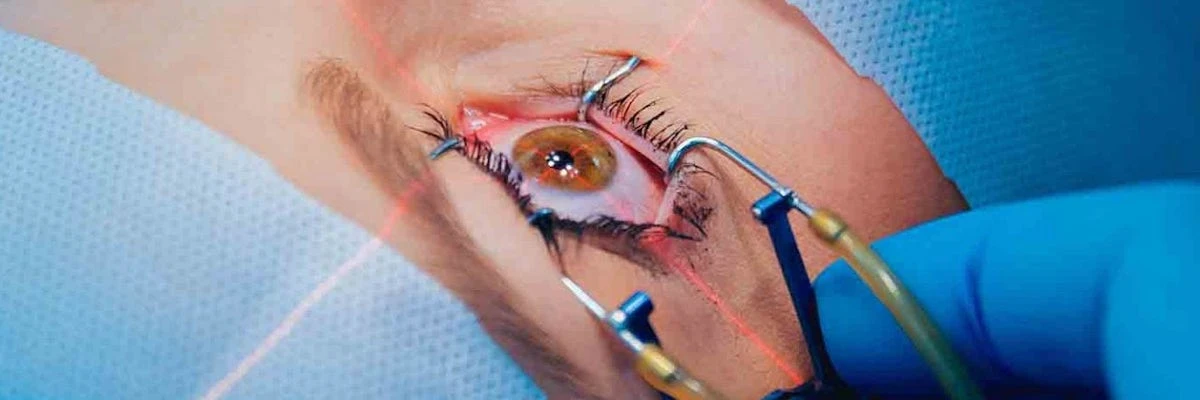5 Trends in Cataract Surgery for 2015: Interview With Dr José Luis Güell
personalEYES | 23 Sep 2019
.webp)
At the recent 46th RANZCO Scientific Congress in Brisbane, one of the most influential ophthalmology specialists today, Dr José Luis Güell, presented his current research to more than 1300 attendees. After this insightful event, we had the honour of talking to Dr Güell about the key trends that are likely to impact on cataract surgery in the years to come.
We would like to take this opportunity to thank Dr Güell once again for the time he devoted to discussing this topic with us.
Refractive Surgery Now and Then: Dr Güell’s Experience
Dr José Luis Güell is a globally renowned specialist in ophthalmology, widely recognised for his research in the field. He is one of the founding partners of the Ocular Microsurgery Institute (Instituto de Microcirurgia Ocular) based in Barcelona, Spain, where he is also a coordinator of the Cornea, Cataract and Refractive Surgery Department. In addition, he is Coordinator of Anterior Segment at the European School for Advanced Studies in Ophthalmology (ESASO).
When it comes to his first refractive surgery, however, Dr Güell briefly describes the experience:
”It was in 1989 when, coming back from my fellowship in the US, I decided to start with a small RK. My first patient was a low myope lawyer and I tried monovision. Everything went perfectly, and pushed me to continue with it and start with the excimer, and shortly after with in situ keratomileusis and LASIK.”
It was probably the initial success that lead to him taking residency and clinical fellowship in Cornea and Refractive Surgery. As he himself notes, there were plenty of reasons for this step ”but the most important one is the attractiveness of corneal transplantation techniques.” Those familiar with Dr Güell’s work are witnesses to the extent to which his approach in the field has advanced, which is why we inquired about the things that made the greatest difference in his work.
Things That Made Differences in Cataract Surgery in 2014
Dr Güell’s main lecture at the RANZCO congress was focused on the somewhat broad topics of keratoplasty techniques and cataract surgery. Prior to his arrival to Australia, he explained that for the last few years, the field developed mostly due to the emergence of new transplantation techniques. When it comes to improvements in the field during the last year, Dr Güell mentions several key points.
The use of new instruments for perfecting vision is certainly one of the things that had a major impact in 2014. In particular, Güell points to a new Toric pseudophakic IOL concept, which will, in the near future, be increasingly used for measuring posterior corneal surface astigmatism. Furthermore, improved alignment strategies using Verion System from Alcon and the Cassini Topographer, as well as the Corneal Shape Analyzer, will improve Toric IOL calculations and panning.
In addition to this, the Centurion phacoemulsification system and asphericity manipulation for presbyopia are other useful systems and techniques that have made a significant difference to Dr Güell’s work. They will allow precise fluidic control and depth of focus respectively, being beneficial in particularly hard cases.
Trends for 2015
When it comes to developments that are likely to create waves in the coming year, Dr Güell names five key points:
1. Femtosecond laser, which is expected to improve nucleous fragmentation strategies, especially for phacorolling in harder nucleous
2. Combination of ORA System into Alcon’s Verion, that would probably make the greatest difference in practice. As WaveTech® Vision announced in August, the combination of the two will allow surgeons to see incisions and alignments of IOL during cataract surgery in real-time to enable optimal positioning of IOLs. This way, intra-operative measures will be significantly enhanced and would allow surgeons to improve patient outcomes during surgery.
3. WIOL from MEDICEM, a bioanalogic intraocular lens that enables polyfocal accommodation and is particularly convenient for those who want greater spectacle freedom
4. Different asphericity options for increasing postoperative depth of focus with monofocal seudophakic IOLs
5. Corneal asphericity manipulation for increasing depth of focus in old monofocal seudophake
Finally, we asked Dr Güell for the single most important piece of career advice he could give to our readers and all the aspiring ophthalmologists out there. His comment is a motivational one; he advises aspiring professionals ”to be honest with themselves and with others… And to smile.”



